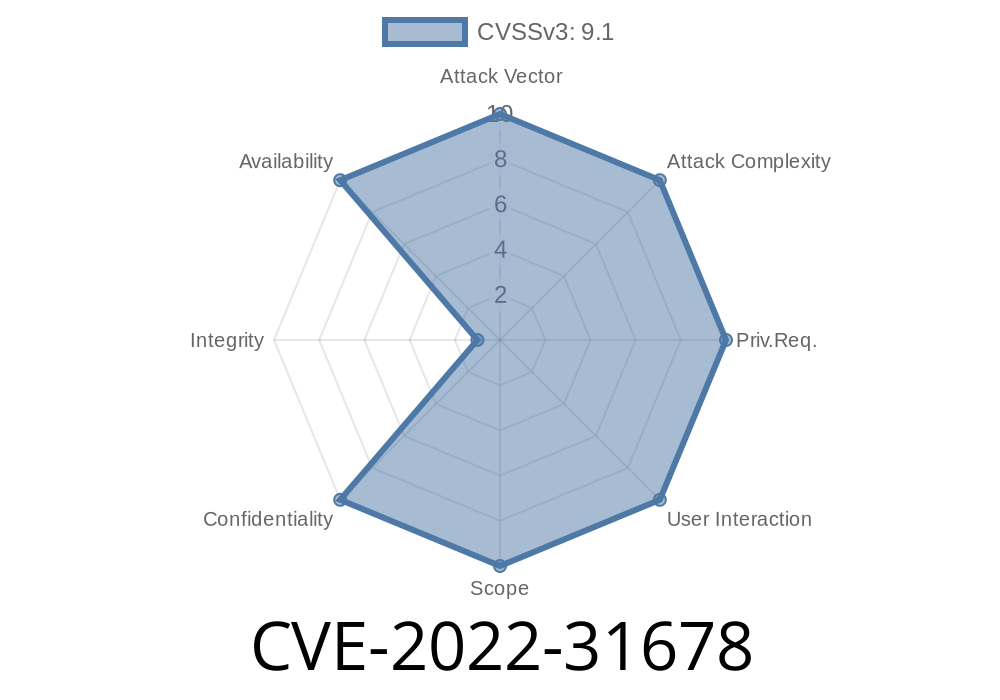The latest security advisory released by VMware outlines a critical XML External Entity (XXE) vulnerability in VMware Cloud Foundation (VCF) instances running NSX-V. This vulnerability (CVE-2022-31678) can be exploited by an attacker to cause a denial-of-service condition or potentially disclose sensitive information. In this comprehensive post, we will delve into the details of this vulnerability, provide code snippets that demonstrate the exploit, and offer links to the original references.
Vulnerability Details
The affected versions of VMware Cloud Foundation (VCF) are 3.x instances that have NSX-V deployed. The XXE vulnerability exists due to improper parsing of XML data within the NSX-V platform. Attackers can exploit this vulnerability by sending a specially crafted XML request to a targeted system. If successful, the attacker can either crash the system (causing a denial-of-service) or potentially access confidential information.
Here's an example of a malicious XML request that triggers the XXE vulnerability
<?xml version="1." encoding="ISO-8859-1"?>
<!DOCTYPE foo [<!ELEMENT foo ANY >
<!ENTITY xxe SYSTEM "file:///etc/passwd" >]>
<request>
<element>&xxe;</element>
</request>
In this code snippet, the attacker is attempting to read the /etc/passwd file on a targeted VCF 3.x instance with NSX-V deployed. The XXE vulnerability enables the attacker to include external entities, such as the /etc/passwd file, in the XML request.
How to Mitigate the Vulnerability
VMware has released a patch for the affected versions of VCF instances running NSX-V. It is strongly recommended to apply the latest VCF and NSX-V patches provided by VMware to mitigate this vulnerability.
Links to the official VMware security advisory and the patch releases can be found below
- VMware Security Advisory: https://www.vmware.com/security/advisories/VMSA-2022-31678.html
- VCF 3.x Patch Release: https://docs.vmware.com/en/VMware-Cloud-Foundation/3.10/rn/VMware-Cloud-Foundation-310-release-notes.html
- NSX-V Patch Release: https://docs.vmware.com/en/VMware-NSX-Data-Center-for-vSphere/6.4/rn/releasenotes_nsx_vsphere_6402.html
The following steps should be followed to protect your organization from this security vulnerability
1. Ensure your organization is running the most up-to-date version of VMware Cloud Foundation (VCF) and NSX-V software.
Apply the relevant security patches as soon as possible.
3. Educate your staff to be aware of potential cyber threats and the importance of implementing security best practices.
Conclusion
The CVE-2022-31678 vulnerability highlights the significance of regularly updating and patching your software to ensure optimal security. By staying informed and taking proactive measures to protect your organization, you can minimize the likelihood of falling victim to this type of exploit. We encourage you to review the original references, apply the recommended patches, and exercise best practices to keep your organization safe.
Timeline
Published on: 10/28/2022 02:15:00 UTC
Last modified on: 10/31/2022 17:02:00 UTC
